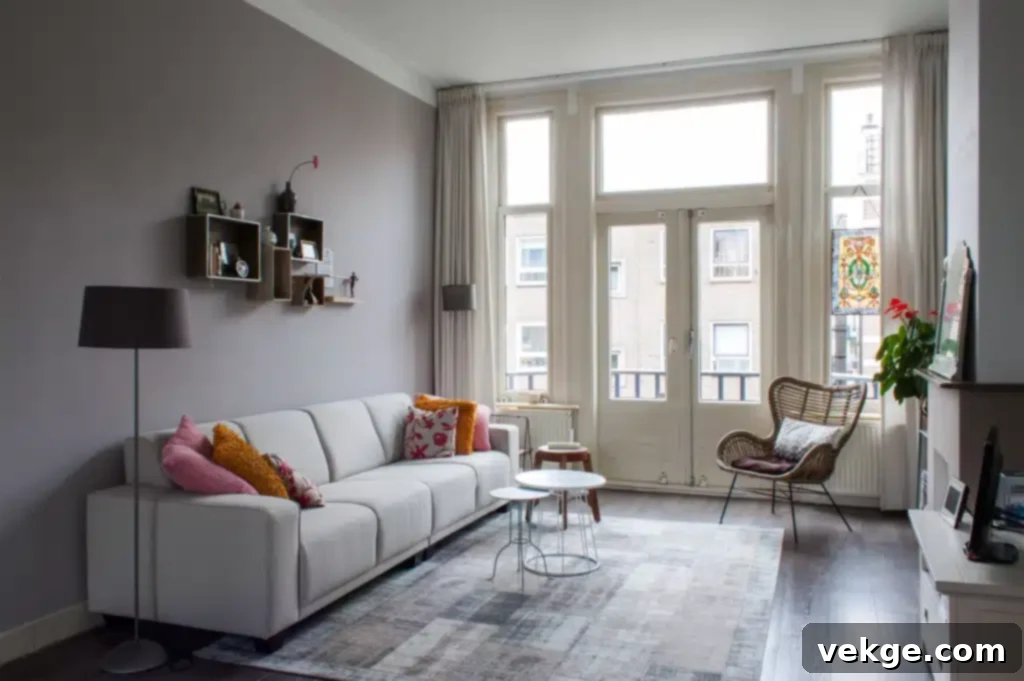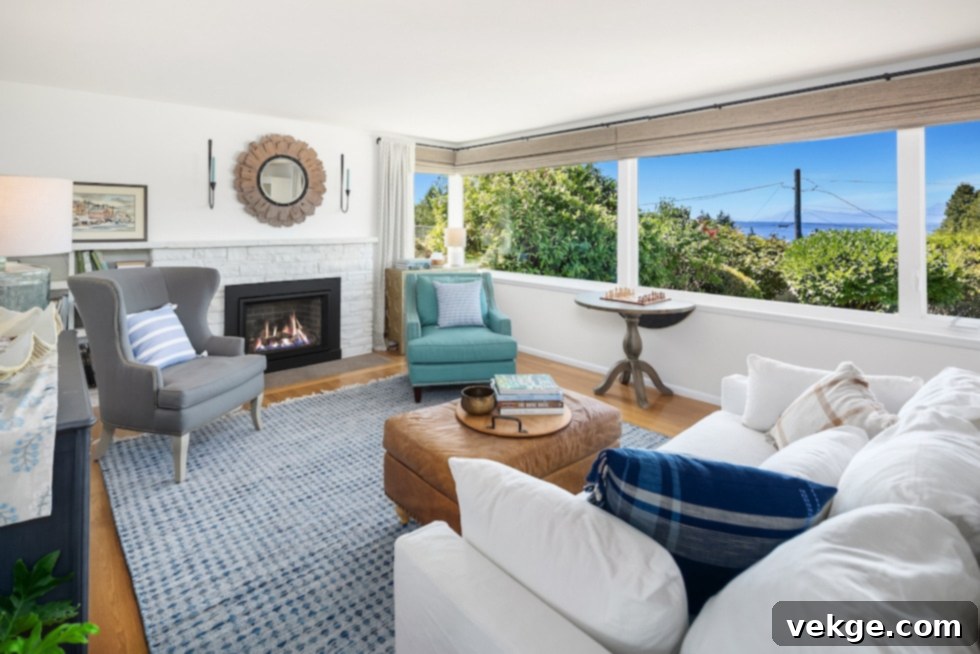Preparing Your Home for Sale: The Ultimate Guide to Maximizing Value and Attracting Buyers
Selling your home is often one of the most significant financial and emotional milestones in life. The journey from deciding to sell to handing over the keys can be complex, but how meticulously you prepare your property for the market can dramatically influence the outcome. An attractive, well-maintained home doesn’t just sell; it sells faster and commands a higher price, yielding a better return on your investment. Today’s buyers are more discerning than ever, armed with extensive online research and a clear vision for their next living space. They seek homes that feel not only welcoming but also move-in ready, free from the immediate burden of extensive repairs or renovations.
By thoughtfully investing your time, effort, and a modest budget into presenting your property in its absolute best light, you craft an irresistible proposition. This strategic approach ensures your home stands out vividly in even the most competitive housing markets, capturing buyer attention from the first glance. This comprehensive guide will walk you through essential steps, providing actionable tips to transform your property into a highly desirable asset, poised for a successful and swift sale. Are you ready to unlock your home’s full potential? Let’s dive in.
Declutter and Clean: Creating Space and Appeal

One of the most impactful and cost-effective first steps in preparing your home for sale is a thorough decluttering and deep cleaning of every single space. Potential buyers need to effortlessly envision their own lives unfolding within your walls. This crucial psychological connection is significantly hindered when they encounter crowded shelves, overflowing closets, and an abundance of personal items. Your goal is to create a sense of spaciousness and neutrality.
Focus on cultivating a minimalistic, tidy, and depersonalized environment. Rooms appear larger, brighter, and inherently more appealing when they are free of clutter and spotlessly clean. Start by packing away personal photographs, memorabilia, and excessive decorations. This helps buyers project themselves into the space rather than feeling like they are intruding on someone else’s home. Pay meticulous attention to high-traffic areas such as the kitchen and living room, ensuring all surfaces gleam, floors are spotless, and the overall layout facilitates easy, unobstructed movement. Don’t forget often-overlooked spots like skirting boards, light fixtures, and windows. A truly clean home signals to buyers that the property has been well-maintained and cared for.
Minor Repairs and Updates: Maximizing Home Value
Addressing minor repairs and undertaking strategic updates around your home can have a surprisingly substantial positive impact on a buyer’s perception and, ultimately, your property’s value. These seemingly small imperfections, if left unattended, can accumulate in a buyer’s mind, creating an impression of neglect and potentially leading them to subtract from their offer price. Simple fixes, such as mending leaky taps, silencing squeaky doors, replacing cracked tiles, or fixing loose cabinet hinges, prevent buyers from being distracted by minor defects and instead allow them to focus on the home’s positive attributes.
Furthermore, consider updating inexpensive elements that can visually date a property, instantly refreshing its appeal. Replacing outdated light fixtures with modern alternatives, swapping old cabinet handles for contemporary designs, or even updating discoloured electrical outlet covers can make a significant difference. These small, relatively inexpensive investments are key to modernising your home’s aesthetic and making it far more attractive to buyers who are actively seeking a space that requires minimal immediate input and is ready for them to move into without hassle. Think of it as polishing a gem – minor efforts can reveal its true sparkle.
Electrical Safety: Ensuring Compliance and Peace of Mind

Ensuring your home meets current electrical safety standards is not merely a beneficial step; it is an essential legal requirement in many regions, especially if you plan to rent out your property, and a significant selling point in all cases. An up-to-date electrical system offers immense peace of mind to potential buyers, demonstrating that the property is not only compliant but also safe and well-maintained. It eliminates a major potential concern and a costly future expense for the new owners.
To demonstrate this commitment to safety and compliance, it is highly advisable to obtain an Electrical Installation Condition Report (EICR), often referred to as a landlord electrical safety certificate in rental contexts. This official document is generated after a qualified electrician thoroughly inspects your electrical installations. It provides crucial reassurance to prospective buyers and tenants that they are investing in a secure property, significantly minimising the risk of electrical issues, which can be a major source of anxiety and unexpected expense. If you plan to rent out your property, it is legally imperative to make a booking for an inspection and obtain this certificate beforehand. Proactively having such certifications updated and readily available to present shows that all electrical installations adhere to the required standards, underscoring your professionalism and ensuring compliance with all safety regulations, thereby building trust and confidence with potential buyers.
Optimising Your Home’s Layout
Rethinking and strategically optimising your home’s layout can dramatically enhance its perceived appeal and functionality. The primary aim is to create an open, intuitive, and flowing space that allows potential buyers to navigate through each room without any obstruction. This encourages them to experience the home as expansive and inviting, rather than cramped or confusing.
This optimisation might involve simple yet effective strategies like rearranging furniture to open up walkways, or even temporarily removing excess pieces that hinder the natural flow. For instance, a living room will undoubtedly appear more spacious and less cluttered without that extra, rarely-used armchair, or a study could seem brighter, more organised, and far more inviting if the desk and shelves are arranged with simplicity and purpose. Creating these inviting, airy spaces helps buyers not only appreciate the physical dimensions of each room but also truly picture their own lives comfortably unfolding within your home. An optimal layout highlights functionality and versatility, allowing buyers to see how the space can adapt to their needs.
Refreshing Décor: Aesthetic Touches That Sell

A fresh coat of paint is arguably one of the most transformative and cost-effective ways to brighten up your home and make it overwhelmingly more appealing to potential buyers. Opt for neutral, light-reflecting colours such as soft greys, whites, or beige tones. These palettes not only make your interiors look cleaner, fresher, and larger but also provide a blank canvas that allows buyers to easily envision their own furniture and style within the space. This strategic colour choice significantly broadens your home’s appeal to a wider audience, as it avoids personal tastes that might not resonate with everyone.
The impact of fresh paint isn’t limited to walls alone; consider painting over scuffed skirting boards, internal doors, and even outdated kitchen or bathroom cabinets to instantly give rooms a more modern, cohesive, and well-maintained feel. Beyond paint, updating soft furnishings can also make a significant difference. Swapping out worn curtains, cushions, and throws for contemporary, neutral pieces can enhance the overall aesthetic, making the space feel cosy, welcoming, and stylish without over-personalising it. Even small decorative accents like a new area rug or a strategically placed mirror can brighten a room and create an illusion of greater space and luxury.
Enhancing Kerb Appeal: First Impressions Count
The exterior of your home is the very first thing potential buyers see, making ‘kerb appeal’ paramount. This initial visual impression sets the tone for their entire visit and can significantly influence their perception before they even step inside. A strong, positive first impression can generate excitement and a willingness to overlook minor interior flaws, while a neglected exterior can immediately create doubts.
Focus on making this first impression as strong and inviting as possible. Start by meticulously tidying up the garden: mow the lawn, trim hedges and bushes, weed flowerbeds, and clear any dead leaves or debris. Ensure pathways, driveways, and entrance areas are clear, clean, and in good repair – power washing can do wonders here. A fresh coat of paint on your front door, perhaps in a welcoming, complementary colour, combined with some attractive potted plants or a neatly arranged window box, can instantly make the entrance feel warm and inviting. Regularly clean windows, repair any damaged exterior fixtures like fencing or gutters, and ensure outdoor lighting is functional and appealing. These simple, yet impactful, exterior enhancements don’t just beautify your home; they encourage potential buyers to step inside with a positive mindset, which is absolutely crucial for successful viewings and ultimately, a swift sale.
Staging Strategies For Every Room

Strategic home staging goes far beyond simple tidying; it’s about crafting an aspirational lifestyle vision within each room that profoundly influences buyers’ decisions. The goal is to highlight the best features of your home and help buyers emotionally connect with the space, enabling them to easily envision themselves living there. This means creating a scene that feels both luxurious and attainable.
In living areas, arrange seating to promote comfortable conversation and a sense of relaxation. Consider adding a few tasteful decorative elements like a stylish throw blanket, a stack of interesting books, or a vase of fresh flowers to add warmth and character. For bedrooms, ensure beds are impeccably made with fresh, inviting linens and plump pillows. Use soft, ambient lighting to create a tranquil and restful atmosphere. In kitchens and bathrooms, the mantra is “less is more.” Clear countertops to showcase as much surface space as possible, making these areas feel expansive and functional. Add a few carefully chosen decorative touches such as neatly folded fresh towels, a bowl of fresh fruit in the kitchen, or a small, elegant plant in the bathroom. These deliberate efforts make your home appear more liveable, sophisticated, and ultimately, more desirable to prospective buyers, turning a house into a dream home.
Showcasing Your Home: The Power Of Professional Photography
In today’s digital age, the vast majority of property searches commence online, making high-quality photographs absolutely essential to capture the immediate attention of potential buyers. Your property’s online listing is its first, and often most critical, impression, so the visuals must be compelling enough to stop scrolls and generate genuine interest. This is where hiring a professional real estate photographer becomes an invaluable investment.
Professionals possess the expertise and equipment to artfully use natural and artificial light, manipulate angles, and compose shots that make rooms appear larger, brighter, and more inviting than amateur photos ever could. They know how to expertly highlight your home’s unique features, architectural details, and desirable selling points, transforming ordinary spaces into captivating scenes. These stunning images are your primary opportunity to stand out distinctively in a crowded online market, compelling more buyers to click, inquire, and schedule viewings. Given the immense impact on lead generation and overall sale success, investing in professional photography is not just worth the cost; it’s a non-negotiable step for maximising your home’s market appeal.
Effective Marketing Techniques
Marketing your home effectively is a critical component in attracting not just any buyers, but serious, qualified buyers who are ready to make an offer. A robust marketing strategy leverages a mix of traditional and innovative digital approaches to ensure your property reaches the broadest and most relevant audience possible.
Begin by creating engaging and detailed online listings across all major property portals. These listings must feature your high-quality professional photos, accompanied by a compelling and descriptive narrative of your property. Highlight its unique features and selling points, whether it’s a newly fitted kitchen, a beautifully landscaped garden, proximity to excellent schools, or recent renovations. Beyond static images, consider incorporating virtual tours or 3D walkthroughs. These immersive tools allow potential buyers to explore your property remotely, experiencing its layout and flow from the comfort of their own homes. This not only increases the likelihood of attracting interest from a wider geographical area but also helps pre-qualify viewers, ensuring that those who visit in person are already genuinely interested. Additionally, leverage social media platforms, email marketing, and local real estate agent networks to amplify your property’s reach, ensuring maximum exposure and generating significant buyer interest.
Handling Viewings and Open Houses

Viewings and open houses are your prime opportunities to make a lasting impression on potential buyers and help them envision your property as their future home. For every showing, it is paramount that your property is absolutely immaculate – a quick, last-minute tidy-up can make an enormous difference in how the home is perceived. Ensure every room is clean, bright, and smells fresh. Prior to viewings, open windows to air out the space, then perhaps light a subtle, pleasant-smelling candle or brew some fresh coffee to create a warm, inviting atmosphere.
Transparency and readiness to provide all relevant information are key to building trust. Be prepared to thoroughly answer any questions about the property, its history, local amenities, and recent improvements. If you are still living in your home during the selling process, consider implementing practical tips for showing your house while living in it to keep things organised, minimise stress, and maintain a pristine environment. For open houses, go an extra step: ensure all lights are on, blinds are open to let in maximum natural light, and perhaps play some soft, instrumental background music. These thoughtful small touches can significantly enhance the buyer’s experience, making your home feel more welcoming and encouraging them to truly envision themselves settling in, fostering that crucial emotional connection that leads to an offer.
Negotiating Offers: Strategies For Success
When offers begin to come in, handling negotiations thoughtfully and strategically is critical to securing the best possible deal while maintaining positive relations with potential buyers. This stage requires a balance of assertiveness and flexibility. Before you even receive an offer, have a clear understanding of your bottom line – the minimum price you are willing to accept, factoring in all costs of selling. This clarity will be your anchor during negotiations.
Be prepared to discuss terms reasonably and accommodate buyer requests if they seem fair and do not significantly compromise your position. This might include flexibility on closing dates, minor repairs, or certain inclusions. However, equally important is knowing when to stand firm on your bottom line and when to counter-offer. Effective negotiation involves both giving and taking; understanding the buyer’s perspective, their motivations, and any constraints they might have can facilitate a much smoother and more agreeable transaction for both parties. Always consult with your real estate agent or solicitor during this process; their experience and objective advice can be invaluable in navigating complex offers and ensuring your interests are protected, ultimately leading to a successful agreement.
The Closing Process: What To Expect
The final, pivotal step in selling your home is the closing process, which involves the legal finalisation of the sale and the official transfer of ownership from you to the buyer. This stage requires meticulous organisation and close collaboration with your legal team. Being well-prepared with all necessary documents and proactively working with your solicitor (or conveyancer) to ensure everything is in perfect order can make this often-complex process as smooth and stress-free as possible.
Understanding the various steps involved is key: from accepting an offer and signing the initial sale agreement, through to property searches, mortgage approvals, exchanging contracts, and finally, completing the legal paperwork on the closing day. Your solicitor will guide you through this labyrinth of legalities, ensuring all conditions are met, funds are transferred correctly, and the property title is transferred legitimately. Anticipating potential questions, having documents like property deeds, energy performance certificates, and electrical safety certificates readily available, and maintaining clear communication with all parties involved—your agent, solicitor, and the buyer’s representatives—will demonstrate your seriousness and professionalism. This diligence not only reassures the buyer that they’ve made the right choice but also helps prevent last-minute complications or delays, allowing for a timely and successful conclusion to your home selling journey.
Preparing your home for sale is a journey that requires effort, but the rewards are substantial. By following these comprehensive tips, you’re not just selling a property; you’re presenting a dream. A well-prepared home generates more interest, fetches a higher price, and ensures a smoother, faster transaction. Invest in your home’s presentation, and reap the benefits of a successful sale.
